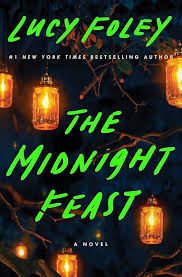I’m not sure when the folk horror (or folk horror “adjacent”!) element of my new thriller, The Midnight Feast first came to me. Perhaps it was researching the area in which the book is set, the West Country: think Stonehenge, Glastonbury, Arthurian legend and Thomas Hardy. This part of the UK is unbelievably rich in ancient history and folkloric legend (did you know, for example, that beneath Glastonbury Tor there’s a portal to the otherworld? Or that neolithical burial mounds and stones circles of dancers petrified by the devil abound?).
The more I pulled a thread, the more I found… and the more I wanted to create my own folk legend inspired by everything I’d learned: enter “The Birds”. I felt, too, that this element would form a nice dark counterbalance to the luxury countryside retreat at the heart of the book, The Manor and a way to pit the modern, monetized brand of “wellness” espoused by the hotel and its founder, Francesca Meadows, against a more ancient, rural, pagan spirituality. I enjoyed playing off the possibility of supernatural influence against the more familiar murder mystery suspect list and it felt like an element I hadn’t seen a great deal of in the whodunnit arena before, with the exception of The Pale Horse: more of which below. There is, however, a rich seam of all things folk horror in fiction old and new and I had great (evil) fun reading the below in the course of my research:

Dark Tales by Shirley Jackson
The literary folk horror OG (well, excepting Thomas Hardy and the Victorians: see below). I still think about “The Man in the Woods” often: a tale in which a young man named Christopher finds himself leaving his life as a college student behind and walking deeper and deeper into the forest, as though propelled by some otherworldly urge, until he comes across a stone cottage. Apparently it was inspired by various strands of folklore including folk horror ur-myth, The Golden Bough (also a source of inspiration for The Wicker Man)—a classical legend about the goddess Diana’s priests ritually murdering one another (I recommend looking this one up!). Jackson’s wonderfully unsettling description of the trees pressing in against the cottage fed directly into my own depiction of the ancient woodland in The Midnight Feast. Folk horror influences also abound in “The Summer People” in which a down-from-town couple decide to break all the unspoken rules and stay (to their increasing peril) in their rural lakeside holiday home beyond Labor Day…
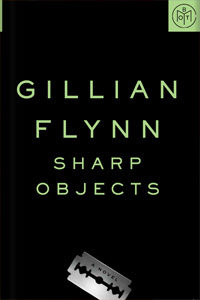
Sharp Objects by Gillian Flynn
For me there’s a True Detective-esque feel to the atmosphere of this small-town-America set thriller. There’s much made of a local “Woman in White” folktale: supposedly this witchlike figure is responsible for the deaths of a couple of Wind Gap’s children. As Gillian Flynn said in an interview with The Hollywood Reporter, this was inspired by “the original Slender Man sort of idea, how that came to be”. There’s a horrifying hunting shack in the woods, the source of much of the protagonist Camille’s past trauma (this trauma being far worse than anything supernaturally-inflicted) and a very folk horror sense of tradition and the fear of breaking tradition, alongside a creeping dread and unease throughout in which nothing and no-one is really what they seem.
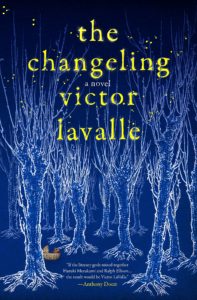
The Changeling by Victor Lavalle
A fascinating, shapeshifting, exquisitely written novel which is by turns enchanting and horrifying. After his wife commits an unspeakable act of violence and vanishes, the protagonist, Apollo, is left to go on an odyssey through a folkloric otherworld of weird creatures, mysterious islands and haunted forests, all occupying the same space as the five boroughs of New York City. Witches and trolls appear alongside discussions of race, immigration, cyberstalking and parenthood in this dark fairy-tale with some mind-blowing twists and more than a touch of folk horror along the way.
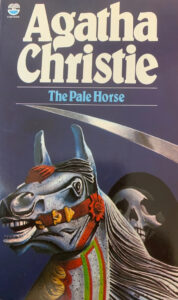
The Pale Horse by Agatha Christie
“Wickedness… such wickedness…”
This novel (along with And Then There Were None) is the Christie I reach for when anyone tries to claim she wrote “cosy crime”. There’s a deep, pitch-dark sense of menace throughout, heightened by the suggestion that some supernatural force is really at play. Local legend has it that the three spooky sisters at The Pale Horse pub are witchy assassins: using their powers to kill anyone they’re asked to, for the right fee. There’s more than a feel of the Dennis Wheatley and all things Hammer Horror to this one: an element amped up to the max in the Sarah Phelps TV adaptation of the book a few years back (think corn dolls and terrifying masked processions) – brilliantly bonkers and helmed by a haunted Rufus Sewell… what’s not to love?
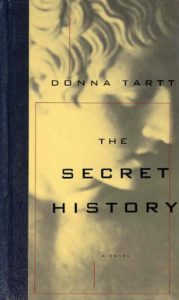
The Secret History by Donna Tartt
Bestial hallucinations and drug-fueled rampages across the New England countryside, a body emerging from its winter covering of snow: this storied mystery is loved for its engagement with Greek mythology, Ripley-esque outsider-among-the-wealthy premise and brilliantly evoked campus setting, but it also has all the elements of a folk horror fever dream. The follies of youth aspect feels ripe for an Ari Aster/ A24 treatment and directly inspired my own foray into dark teenagerhood in The Midnight Feast.

Damnable Tales: A Folk Horror Anthology, selected and illustrated by Richard Wells
Did you know Thomas Hardy wrote folk horror? And Robert Louis Stevenson? Well I certainly didn’t, until I came across this brilliant collection. It turns out the Victorians were arguably the originators of folk horror as we know it today with their vision of the unruly (and sometimes unholy!) rural as an antagonist to civilized, god-fearing society.
***


